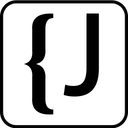
本文探讨了在go语言中处理嵌套json数据的两种主要方法,特别是在`goweb`框架的`create`函数中。我们将详细介绍如何通过泛型`map[string]interface{}`进行逐层解析,以及更推荐的、类型安全的`encoding/json`包直接反序列化到结构体的方法,并提供相应的代码示例和注意事项,帮助开发者高效、健壮地处理复杂json结构。
在Go语言的Web开发中,处理来自客户端的JSON数据是常见的任务。当JSON结构变得复杂,包含嵌套对象时,如何有效地将其解析到Go的结构体中就成为一个关键问题。本文将以goweb框架为例,深入探讨两种解析复杂JSON的方法:基于泛型map[string]interface{}的逐层解析,以及利用encoding/json包进行直接结构体反序列化。
假设我们有一个Thing类型,最初定义为:
type Thing struct {
Id string
Text string
}其对应的JSON结构为 {"Id":"TestId","Text":"TestText"}。goweb的Create函数通常会接收一个data interface{}参数,并通过dataMap := data.(map[string]interface{})将其转换为一个泛型映射。对于简单的Thing,我们可以直接通过dataMap["Id"].(string)和dataMap["Text"].(string)来访问字段。
然而,当Thing类型被修改为包含一个嵌套结构ThingText时:
立即学习“go语言免费学习笔记(深入)”;
type ThingText struct {
Title string
Body string
}
type Thing struct {
Id string
Text ThingText // 嵌套结构
}此时,期望的JSON结构变为 {"Id":"TestId","Text":{"Title":"TestTitle","Body":"TestBody"}}。如果仍然尝试通过dataMap["Title"]或dataMap["Body"]直接访问,将会导致运行时错误,因为dataMap中并没有名为"Title"或"Body"的顶级键。dataMap["Text"]现在是一个嵌套的JSON对象,而不是简单的字符串。
解决这个问题的关键在于正确地处理JSON的层级结构。
goweb框架的Create函数通常提供一个data interface{}参数,该参数在内部可能已经被解析为map[string]interface{}。对于嵌套的JSON结构,我们可以通过连续的类型断言来逐层访问。
核心思想: 当dataMap["Text"]是一个JSON对象时,它在Go中会被解析为另一个map[string]interface{}。因此,我们需要再次进行类型断言来获取这个嵌套的映射,然后才能访问其内部字段。
代码示例:
package main
import (
"fmt"
"net/http"
"github.com/stretchr/goweb"
"github.com/stretchr/goweb/context"
)
// 定义嵌套结构
type ThingText struct {
Title string
Body string
}
type Thing struct {
Id string
Text ThingText
}
// 模拟存储
var things = make(map[string]*Thing)
func main() {
goweb.Map("/things", func(c *context.Context) error {
// HTTP POST 请求,用于创建Thing
if c.Method() == http.MethodPost {
return CreateThing(c)
}
// 其他HTTP方法(如GET)的逻辑
return c.NoContent()
})
// 启动服务器
http.ListenAndServe(":9090", goweb.DefaultHttpHandler())
}
func CreateThing(c *context.Context) error {
// 获取请求数据,goweb通常将其解析为interface{}
data := c.RequestData()
// 将数据断言为顶层map[string]interface{}
dataMap, ok := data.(map[string]interface{})
if !ok {
return c.RespondWith(400, nil, "Invalid request data format")
}
thing := new(Thing)
// 访问Id字段
if id, ok := dataMap["Id"].(string); ok {
thing.Id = id
} else {
return c.RespondWith(400, nil, "Id is missing or invalid")
}
// 访问嵌套的Text字段,它是一个map[string]interface{}
if textData, ok := dataMap["Text"].(map[string]interface{}); ok {
// 从嵌套的map中访问Title字段
if title, ok := textData["Title"].(string); ok {
thing.Text.Title = title
} else {
return c.RespondWith(400, nil, "Text.Title is missing or invalid")
}
// 从嵌套的map中访问Body字段
if body, ok := textData["Body"].(string); ok {
thing.Text.Body = body
} else {
return c.RespondWith(400, nil, "Text.Body is missing or invalid")
}
} else {
return c.RespondWith(400, nil, "Text object is missing or invalid")
}
// 存储或处理thing
things[thing.Id] = thing
fmt.Printf("Created Thing: %+v\n", thing)
return c.RespondWith(200, thing, nil)
}如何测试:
启动上述goweb服务器后,可以使用curl发送POST请求:
curl -X POST -H "Content-Type: application/json" -d '{"Id":"TestId","Text":{"Title":"TestTitle","Body":"TestBody"}}' http://localhost:9090/things服务器将成功解析并创建Thing对象。

Easily find JSON paths within JSON objects using our intuitive Json Path Finder
 30
30

注意事项:
Go语言标准库的encoding/json包提供了强大且类型安全的JSON反序列化能力。通过将JSON直接解码到预定义的Go结构体中,我们可以避免大量的类型断言和手动字段赋值,从而提高代码的可读性和健壮性。
核心思想:encoding/json包能够自动将JSON字段映射到Go结构体字段。对于嵌套的JSON对象,只要Go结构体中也定义了对应的嵌套结构体,它就能自动完成解析。
代码示例:
package main
import (
"encoding/json"
"fmt"
"io"
"net/http"
"github.com/stretchr/goweb"
"github.com/stretchr/goweb/context"
)
// 定义嵌套结构(与方法一相同)
type ThingText struct {
Title string `json:"Title"` // 可选:使用json tag明确映射JSON字段名
Body string `json:"Body"`
}
type Thing struct {
Id string `json:"Id"`
Text ThingText `json:"Text"`
}
// 模拟存储
var things = make(map[string]*Thing)
func main() {
goweb.Map("/things", func(c *context.Context) error {
if c.Method() == http.MethodPost {
return CreateThingWithUnmarshal(c)
}
return c.NoContent()
})
http.ListenAndServe(":9090", goweb.DefaultHttpHandler())
}
func CreateThingWithUnmarshal(c *context.Context) error {
var thing Thing
// 从请求体中直接读取JSON数据并解码到结构体
// 注意:这里直接访问了c.Request().Body,而不是goweb处理后的c.RequestData()
// 这样做可以绕过goweb可能进行的初步解析,直接使用encoding/json
decoder := json.NewDecoder(c.Request().Body)
err := decoder.Decode(&thing)
if err != nil {
if err == io.EOF {
return c.RespondWith(400, nil, "Empty request body")
}
return c.RespondWith(400, nil, fmt.Sprintf("Failed to decode JSON: %v", err))
}
// 验证必要字段(可选,但推荐)
if thing.Id == "" {
return c.RespondWith(400, nil, "Id field is required")
}
if thing.Text.Title == "" {
return c.RespondWith(400, nil, "Text.Title field is required")
}
// 存储或处理thing
things[thing.Id] = &thing
fmt.Printf("Created Thing (Unmarshal): %+v\n", thing)
return c.RespondWith(200, thing, nil)
}如何测试:
使用与方法一相同的curl命令即可。
注意事项:
在Go语言中处理嵌套JSON数据时,encoding/json包提供的直接结构体反序列化是更推荐的方法。它提供了类型安全、代码简洁和自动映射的优势,大大提高了开发效率和代码质量。
何时选择哪种方法:
在goweb或其他Web框架中,集成encoding/json通常意味着你需要直接访问http.Request对象的Body字段。通过选择合适的解析策略,你可以高效且健壮地处理Go应用中的各种复杂JSON数据。
以上就是Go语言中处理嵌套JSON数据:以goweb框架为例的详细内容,更多请关注php中文网其它相关文章!

每个人都需要一台速度更快、更稳定的 PC。随着时间的推移,垃圾文件、旧注册表数据和不必要的后台进程会占用资源并降低性能。幸运的是,许多工具可以让 Windows 保持平稳运行。




Copyright 2014-2025 https://www.php.cn/ All Rights Reserved | php.cn | 湘ICP备2023035733号